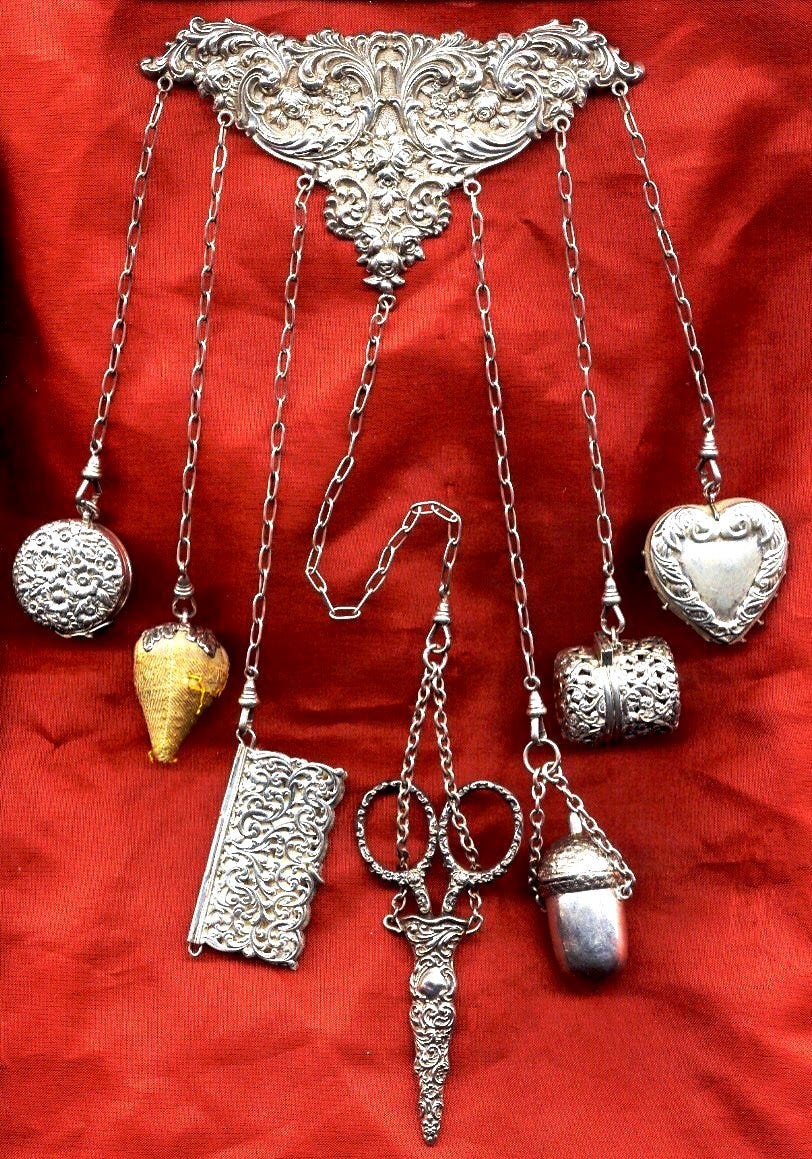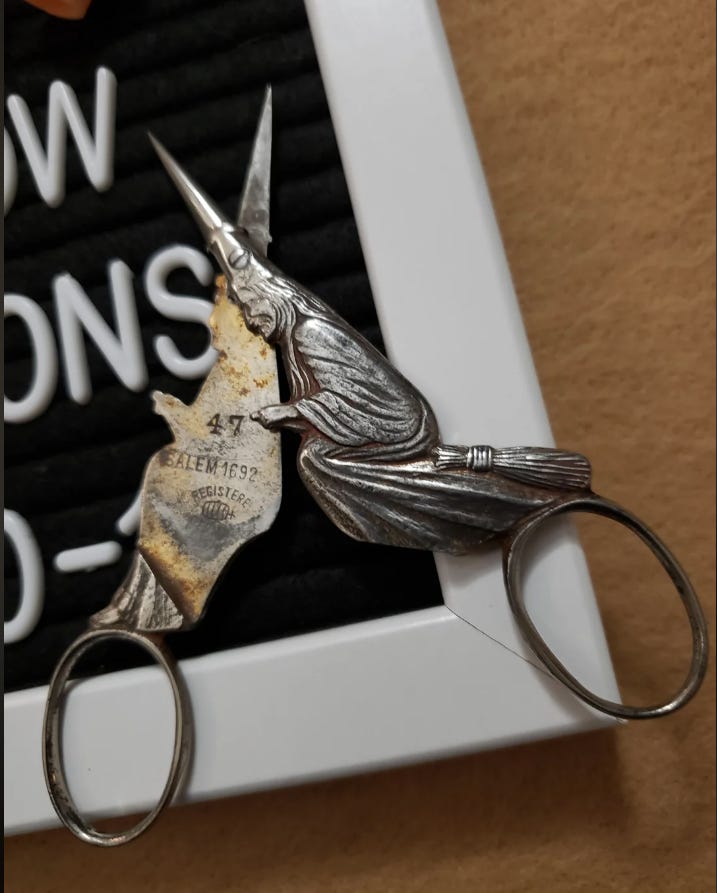When writing historical fiction, I often learn a lot about technology. I’ll be working on a scene in which a character reaches for the doorknob (or a pencil or a hairpin) and realize that I need to research what a doorknob (or pencil or hairpin) would have been like during a particular time period.
One of my favorite technological discoveries while working on Fireland was Victorian sewing scissors.
One of my characters in this novel is a mid-18th century British woman. Though she lives in a remote part of South America, she’s culturally a Victorian British woman. She does a lot of sewing for her family and her community. So when she reached for her sewing scissors, I had to stop and make a note to look up what sewing scissors would have been like for Victorian British women.
Turns out they were beautiful. And stored in a very practical way!

A chatelaine was a broach or medallion that attached to a lady’s waistband, from which hung one or several chains with attachments. The attachments varied depending on the wearer’s needs or interests (there were ones with attachments specific to nursing or hobbies like golfing or painting), but one common attachment was scissors.
Women have worn tools or keys around the waist or the neck since humans first started using tools and keys, but in the 1700s, ornamental chatelaines became a fashion accessory. They remained popular up until the early 1900s.

The name “chatelaine” comes from the French word that referred to the keeper of the keys of a medieval castle, who probably would have worn the keys on their waistband. The 19th century accessories sometimes symbolically included keys to show a woman’s power and responsibility.
Chatelaines were worn by members of all social classes, from plain and utilitarian ones worn by the working classes at home to fancy ones made of precious metals and fillagree worn by the upper classes, even royalty.

Chatelaines served the practical purpose of keeping helpful items within reach, kind of like a toolbelt. They honestly seem almost more useful than pockets, because there’s a limited number of things you can put in a pocket—and there’s always the danger of a heavy item falling out of a pocket (as illustrated by the number of times today my phone has fallen out of my sweatshirt’s shallow pocket).

I never mention chatelaines by name in my novel—doing so would require too much explanation that would distract from the story—but learning about this bit of technology means I can more accurately picture what kind of motion my character would have made when she was ready to cut the thread on her sewing project. She likely would have reached for the scissors dangling from her waist, not into a sewing box.
Getting this sort of detail right lends scenes authenticity. Even if readers don’t recognize a particular technology I have in mind, they respond to that sense of authenticity on the page. This builds trust that I, the author, did my research homework, even if I don’t “show my work” through detailed descriptions or explanations.
Finally, this next photo is too fun not to share. In honor of spooky season:

Sources:
Hunter Oatman-Stanford, “The Killer Mobile Device for Victorian Women,” interview with Genevieve Cummins, co-author of the book Chatelaines: Utility to Glorious Extravagance, published by Collectors Weekly on 23 May 2013, accessed 9 Oct 2024.
“Chatelaine (ornament),” Encyclopedia Britannica, accessed 9 Oct 2024.
“Chatelaine,” item details, Victoria and Albert Museum, accessed 9 Oct 2024.




So interesting!
This is so cool! Now I want a chatelaine of my very own!